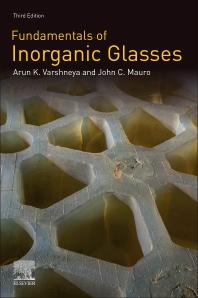Inorganic glass
Viscosity and surface properties
Glass production from fuse, clarification, homogenization, molding, processing, until each process of annealing is closely related to viscosity. If the viscosity is small, the viscosity of the melt is low in the melt, the viscosity of the glass forming and annealing; the selection of the processing range and processing method of the glass article depends on the rate of melt viscosity and its rate change with temperature. . The viscosity is also an important factor affecting cement, ceramics, and refractory firing rates. Reducing the viscosity is advantageous to promote sintering, but the viscosity has increased the ability to deform the deformation of the globiode; if the melt viscosity control is improperly controlled in the ceramic glaze, it will form a flaw resistance. In addition, the corrosion of the slag on the refractory material is also related to the operation of the blast furnace and the boiler. Therefore, the viscosity of the melt is an important process parameter that needs to be controlled during the manufacturing process of inorganic materials. The viscosity is a measure of fluid (liquid or liquid) resistance. When the liquid flows, a layer of liquid is contained in another layer of liquid, and the size of the in-layer friction force F is proportional to the contact area between the two layers of liquid and its vertical flow direction.

Mechanical properties
In practical applications, glass products are often bending, stretching and impact stresses, less compressed stress. The main indicators of the mechanical properties of glass are tensile strength and brittle indicators. The theoretical tensile strength of the glass is 12000MPa. The actual strength is only 1/300 ~ 1/200, typically 30 to 60 mPa, and the pressure strength of the glass is 700 ~ 1000 mPa. Various defects in the glass have caused the stress concentration or weak link, the greater the size of the test piece, the more defects are present. The impact of defects against anti-pulling strength is very significant, and the impact on the compressive strength is smaller. The foreign impurities and ribs (chemical uneven parts) caused by the process have significant effects on the strength of the glass. Brittle is the main disadvantage of the glass, the brittle index E of the glass is 1300 to 1500 (rubber is 0.4 to 0.6, the steel is 400 to 460, the concrete is 4200 ~ 9350). The larger E, the greater the brittleness.
Thermosity of the thermal properties
The thermal properties of the glass mainly include more heat capacity, thermal expansion, thermal conductivity, thermal stability, and the like. The heat capacity of the glass increases with the temperature rise, and below the transition temperature (Tg), the heat capacity is increased; the temperature is raised to Tg, the heat capacity increases rapidly; the heat capacity of the molten glass increases sharply with the rise of the temperature . The thermal expansion coefficient of the glass is determined by the chemical composition of the glass, and Na 2 o and k 2 O can significantly increase the thermal expansion coefficient; the hot quench coefficient of quartz glass is minimal Increased SiO 2 content to obtain glass with low thermal expansion coefficients. Glass is a thermally conductive conductor, and the thermal conductivity of the glass is about 1/400 of copper. When the glass is suddenly cold, the volume effect caused by the difference in shrinkage is easily caused by local or surface stress, resulting in breaking of the glass. The thermal stability of the glass refers to the performance of the glass that can be treated with a sharp temperature change, depending on the thermal expansion coefficient, elastic modulus and strength of the glass. When the temperature varies sharply, the glass produces a fragmentation, and the hottest stability of the glass is stronger than the emergency stability. The thermal expansion coefficient of soda calcium glass is large, and the hot expansion coefficient of the borosilicate is small, the hot-resistant heat resistance is strong, called the heat-resistant glass, the lowest thermal expansion coefficient is the best in quartz glass, the thermal stability is preferably.
Electrical and optical properties
glass electrical properties are an important nature closely related to modern information technology. It mainly refers to the conductivity of the glass, and the conductivity is measured. Glass conductivity is affected by temperature and chemical composition. The conductivity of the glass at room temperature is small, and it is an electric insulator. The electrical conductivity of the glass rises sharply with temperature, and the molten state is generally a electrical conductor. The insulation performance of quartz glass is preferably, and the alkali metal oxide in the glass increases significantly.
Optical properties are the most important physical properties of glass. Light irradiation to the glass surface can generate three cases of transmission, reflection, and absorption. The light is referred to as a transmissive, and the light is blocked by a glass, reflected in a certain angle is reflected, and a portion of the light energy loss is referred to in the inside of the glass by glass. The transmission of light in the glass decreases with the thickness of the glass, and the reflection of the light in the glass does not selectively selectively, and the absorption of light in the glass is selectively selected to the wavelength of the light. A small amount of colorant can be added to the glass to select the light absorb certain wavelength, but the light transmittance of the glass is lowered. It is also possible to change the chemical composition of the glass to select absorption of visible light, ultraviolet, infrared, X-rays, and gamma rays.
Latest: Anonymous P2P








